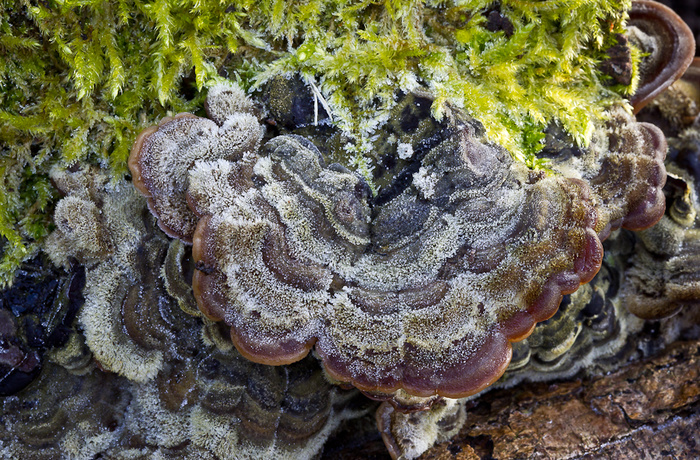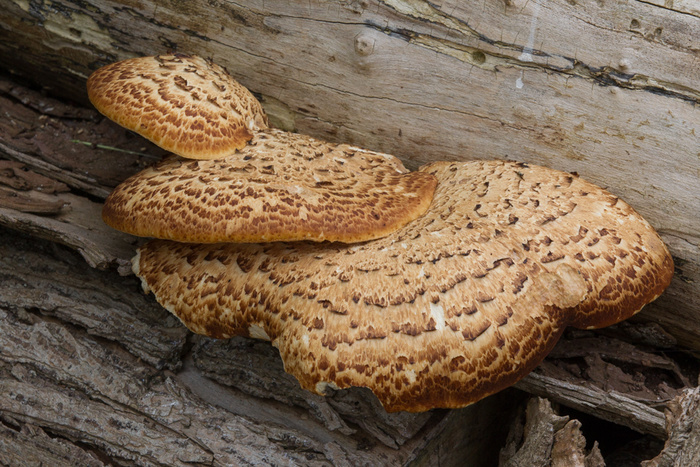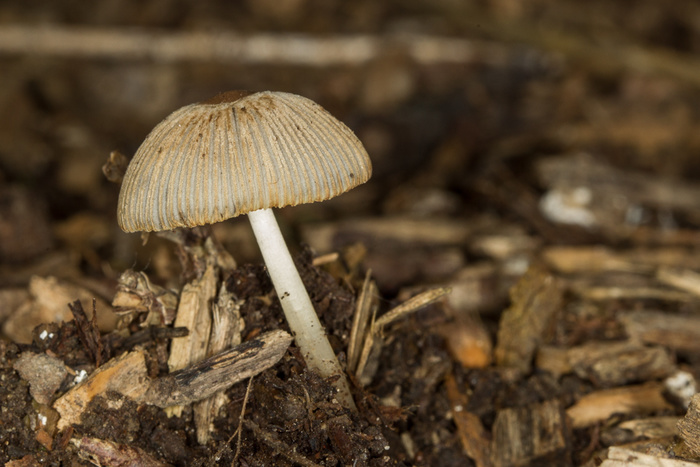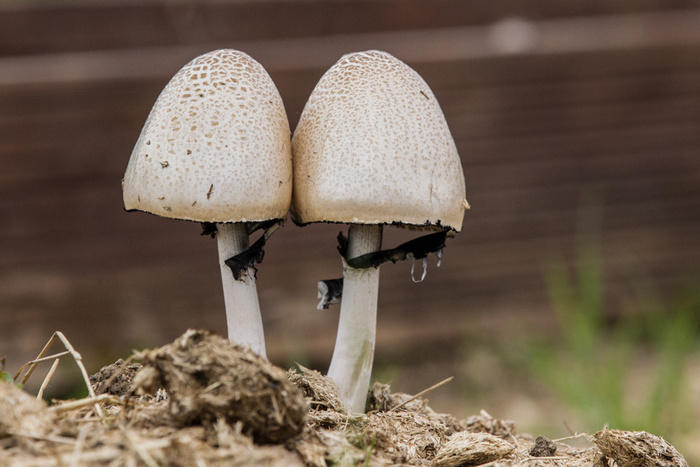Much Room for Mush Rooms?
22nd June 2016
At differing points in time on the Allotment various different mushrooms /fungi have been spotted on site. Whilst we have tried our best to identify and provide some information within this article, any more experienced fungi experts who could identify and advise more fully would be appreciated.

Some time ago, a log pile was placed on Karen's allotment, and two differing types of fungi have now been photographed. The first was a considerable spread of Tramatus Vericolor, apparently quite common and gets it's name from the rings of colour on the fungi. Trematus vericolor translating 'of several colours'.
More recently a rather more glorious specimen developed, Dryad's Saddle Cap, significant in size, apparently edible and thrives on dead or rotting wood. Individual caps grow to between 10 and 60cm in diameter and are 5 to 50mm thick. Often in tiers, the caps are attached to the host tree by a very short lateral (occasionally eccentric but not quite lateral) stem that darkens towards the base.
Beneath the yellow to tan upper surface, the cap flesh is white and tough.

Spotted last weekend on the pathway of project 63, and a small fungi known to grow on areas of mulch or rotting wood, Parasola Auricoma. When young, its rusty brown to orange-brown cap lacks woolly or scaly veil remnants--and as the cap matures, developing grayish, umbrella-like striations, the center area remains smooth and orangish brown. Under the microscope, Parasola auricoma features fairly large, ellipsoid spores and a cap surface adorned with very long, reddish brown hairs.

Recently spied on a heavily manured plot along the middle of the site a considerable volume of Panaeolus Semiovatus, known to produce on cattle manure.
Panaeolus semiovatus var. semiovatus, also known as Panaeolus semiovatus and Anellaria separata, is a medium-sized buff colored mushroom/toadstool that grows on horse dung, and has black spores. While some guides list this species as edible, a few people experience gastric upset after consumption. Its common names are the shiny mottlegill, or egghead mottlegill

Images of the above are contained within this article, and if there are any observations or corrections we would welcome these to ensure that the information contained is as accurate as possible.